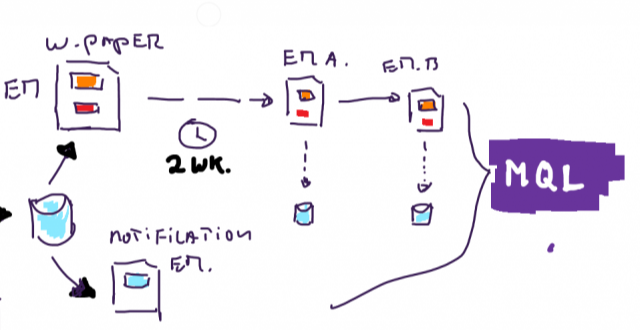What does sales struggle with more now than in the past?
- Getting answers from prospects
- Closing deals
- Addressing multiple decision makers in the organization
- Identifying good leads (prospecting)
Slightly lower on the list, but also interesting:
- Using social media more during the sales journey
- Making a connection via E-mail

As you can see, the goals of marketing and sales are very close to each other. Sometimes they even overlap! Marketing can therefore very well help sales from its expertise in achieving goals. Vice versa this applies just as well.
For example, sales can > help marketing deliver qualified leads:
-
Marketing goals: goals that match those of sales
Sales is used to working on the basis of targets. They can help marketing quantify targets in a way that is understandable for them and for management. Inthis blog I'll tell you step by step how to reverse engineer the sales funnel and arrive at realistic targets. -
Reporting: for support & insight
Sales reports its progress periodically to upper management. They can give marketing the tools to do the same! When KPIs are set up in addition to goals, clear reporting gives marketing the (indispensable) support for plans.
-
Definitions: compare apples with.... apples!
Sales has a clear picture of what they mean by a lead. It is up to sales to first equalize these definitions so that marketing knows when a lead is qualified or not. -
Customer profiles: who knows the customer better than sales?
Every B2B customer has different goals and therefore different knowledge needs. Sales knows the customer inside out, and can share this valuable knowledge and experience with marketing.
This is how marketing > can help sales close the deal
-
Buyer personas: who is your ideal customer?
Based on the insights gained about the customer (customer profiles), marketing can draw up buyer personas. This allows marketing to build a unified picture in the organization of the persons (the DMU) to whom marketing and sales are speaking. It is up to marketing to continually hone these personas and ensure that sales benefits from them. -
Customer insights: providing sales with data-driven insights
Of course sales can tell a lot about the customer, but your target audience online also tells a lot about themselves! A modern marketer uses well-thought-out metrics to track how a potential customer moves across online channels. A lot of valuable information can be gleaned from this. Sales can use these insights to better connect with what captivates and binds the customer. So customer knowledge comes not only from sales, but also from marketing. Tip: There is software on the market, such asHubSpot's Marketing and Sales software which helps you become a data-driven professional who has a 360-degree view of the customer.
-
Social selling: social throughout the sales journey
We just saw that smart use of social media during the sales journey is an important goal of sales. Marketing can give sales excellent advice on how to set up their social media profiles.
-
Content creation: help sales become 'helping sales people'
There is a lot of good content in the organization. If it is not there, marketing can create it using a well thought-out content strategy. The content is not only valuable for converting website visitors into leads (marketing), but can also be used very well fornurturing leads (marketing) and closing the deal (sales). Thus, sales becomes a helping salesperson. This content can serve as a hook at different stages in the buying journey. -
E-mail marketing: a nurturing tool for marketing and sales
Marketing can support sales by using E-mail to bring blogs, white papers and other valuable content to their attention. But also think of trade show activation where leads can be enthused about your services, products and people before, during and after a trade show.
As you can see, there are many ways in which marketing and sales can lend a hand to each other. Finally, both parties are jointly responsible for growing the organization!
If you can't wait to get started, along with sales, check out the white paper on digital marketing for manufacturing companies. Discover how to gain indispensable insights to deployactions at the right time and seamlessly connect them, and then you can get started.... from lead to customer!
The above results are from HubSpot ' sState of Inbound report.








